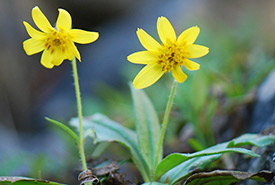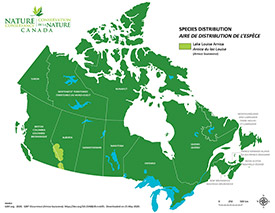
Lake Louise arnica (Photo by Tab Tannery, CC-BY-NC)
Lake Louise arnica
What does this species look like?
Lake Louise arnica is a small, perennial herbaceous plant in the sunflower family, named for Lake Louise in the Canadian Rockies.
The stem of the Lake Louise arnica reaches between five and 20 centimetres in height and has a rosette of narrow green leaves at its base. Its flowerheads are yellow with soft, hairy petals. Lake Louise arnica flowers from July to August.
This species’ pale-yellow colour and drooping shape help distinguish it from similar arnica species in the region.
Where does it grow?
Lake Louise arnica is unique to Canada and is found only in the Canadian Rockies of Alberta and BC. It grows in alpine meadows and on rocky, exposed slopes at high elevations.
What is its conservation status?
This species is globally imperiled with observations in only about 20 locations.
What is NCC doing to protect habitat for this species?
The Nature Conservancy of Canada (NCC) protects natural areas that provide habitat for Lake Louise arnica, including the Castle-Crowsnest Watershed area in Alberta and the Flathead River Valley in British Columbia.






